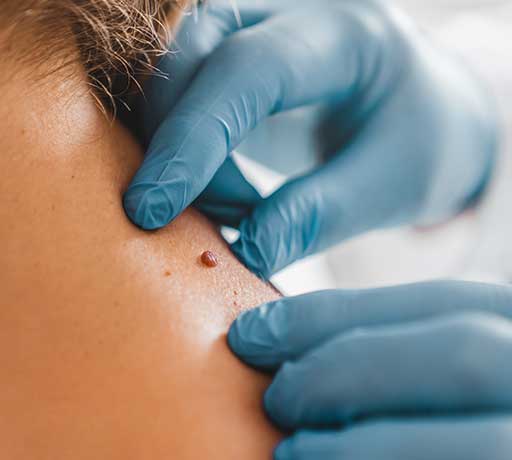Moles, also known as nevi, are common skin growths that appear as dark brown or black spots. While many are harmless, some individuals choose to have them removed for cosmetic or medical reasons. The safety and effectiveness of mole removal procedures have improved significantly due to advancements in dermatology. However, one important concern remains: Is mole removal safe for all skin types?
Understanding this question is crucial, especially in places with diverse populations and climates, like the UAE. With growing demand for Mole Removal In Dubai, understanding the implications for different skin types can help individuals make informed choices.
Understanding Different Skin Types
Skin type classification plays a critical role in determining how your skin will respond to cosmetic procedures, including mole removal.
The Fitzpatrick Skin Type Scale
The Fitzpatrick scale categorizes skin into six types based on pigmentation and response to UV exposure:
| Fitzpatrick Type | Skin Description | Sun Reaction |
|---|---|---|
| Type I | Very fair, always burns, never tans | High risk of sunburn |
| Type II | Fair, usually burns, tans minimally | High sensitivity |
| Type III | Medium, sometimes burns, tans slowly | Moderate sensitivity |
| Type IV | Olive, rarely burns, tans easily | Low risk |
| Type V | Brown, very rarely burns | Very low risk |
| Type VI | Dark brown or black, never burns | Highly resistant to sun |
Each type may react differently to mole removal procedures. For example, darker skin types are more prone to pigmentation changes or scarring.
Common Mole Removal Technique
Several techniques are used to remove moles, and their suitability varies depending on the mole’s characteristics and skin type.
Surgical Excision
Surgical removal is often recommended for larger or potentially suspicious moles. This method involves cutting out the mole and stitching the skin. While effective, it may cause scarring, especially in darker skin tones if not managed carefully.
Laser Mole Removal
Laser technology is a non-invasive method often used for flat or pigmented moles. It’s generally well-suited for fair to medium skin tones, but may require caution in darker skin types due to the risk of hyperpigmentation.
Shave Excision
This method involves shaving the mole at skin level. It is quick and usually leaves minimal scarring. It’s more appropriate for raised moles and can be considered safe for various skin tones when performed correctly.
Cryotherapy
Using liquid nitrogen to freeze the mole is another approach. However, this is more commonly used for warts and may not be ideal for all mole types or darker skin tones due to pigmentation risks.
Is Mole Removal Safe for Darker Skin Tones?
Individuals with darker skin (Types IV to VI on the Fitzpatrick scale) need to be particularly cautious with mole removal treatments. Although the procedures themselves are generally safe, the healing process may involve:
- Post-inflammatory hyperpigmentation (PIH)
- Hypopigmentation
- Keloid or hypertrophic scarring
However, with proper aftercare and skilled application of the right removal method, mole removal is safe across all skin tones.
Key Considerations for Safe Mole Removal
To ensure safety and effectiveness, several factors must be considered:
Skin Type Assessment
Accurate identification of your skin type helps tailor the procedure and minimize risks.
Type of Mole
Is the mole flat or raised? Pigmented or flesh-colored? The structure determines the best removal technique.
Healing Capacity
Some individuals have a higher tendency to scar or develop pigmentation changes. This is especially important in individuals with sensitive or reactive skin.
Benefits of Mole Removal
While some people choose mole removal for medical reasons, others do so for aesthetics or comfort.
Cosmetic Improvement
Moles in visible areas like the face or neck may affect self-esteem. Removing them can lead to improved confidence and skin appearance.
Preventative Measure
In some cases, mole removal is done as a precaution against potential skin abnormalities. Regular monitoring is essential for skin health, particularly in sunny environments like Dubai.
FAQs
1. Can mole removal cause scarring?
Yes, scarring is a possibility, but it’s usually minimal with advanced techniques and proper aftercare. The risk varies depending on skin type and healing tendency.
2. Is mole removal painful?
Most mole removal methods are performed under local anesthesia, making the procedure virtually painless. You might feel slight discomfort during healing.
3. Can mole removal cause skin discoloration in darker skin tones?
Yes, post-inflammatory hyperpigmentation or hypopigmentation can occur in darker skin. Proper aftercare and expert technique help minimize this risk.
4. Is mole removal permanent?
In most cases, yes. However, there’s a small chance that a mole might partially regrow if it wasn’t completely removed.
5. When can I wear makeup after mole removal?
You should wait until the treated area is fully healed, which usually takes 7–10 days or more, depending on the method used.
Final Thoughts
Mole removal is generally a safe and effective procedure for all skin types, provided it’s done with care and appropriate techniques. Understanding your skin’s unique characteristics plays a major role in ensuring optimal results. No matter your skin tone, a personalized approach, proper aftercare, and sun protection can ensure that Mole Removal is a safe, successful journey to clearer and more confident skin.































